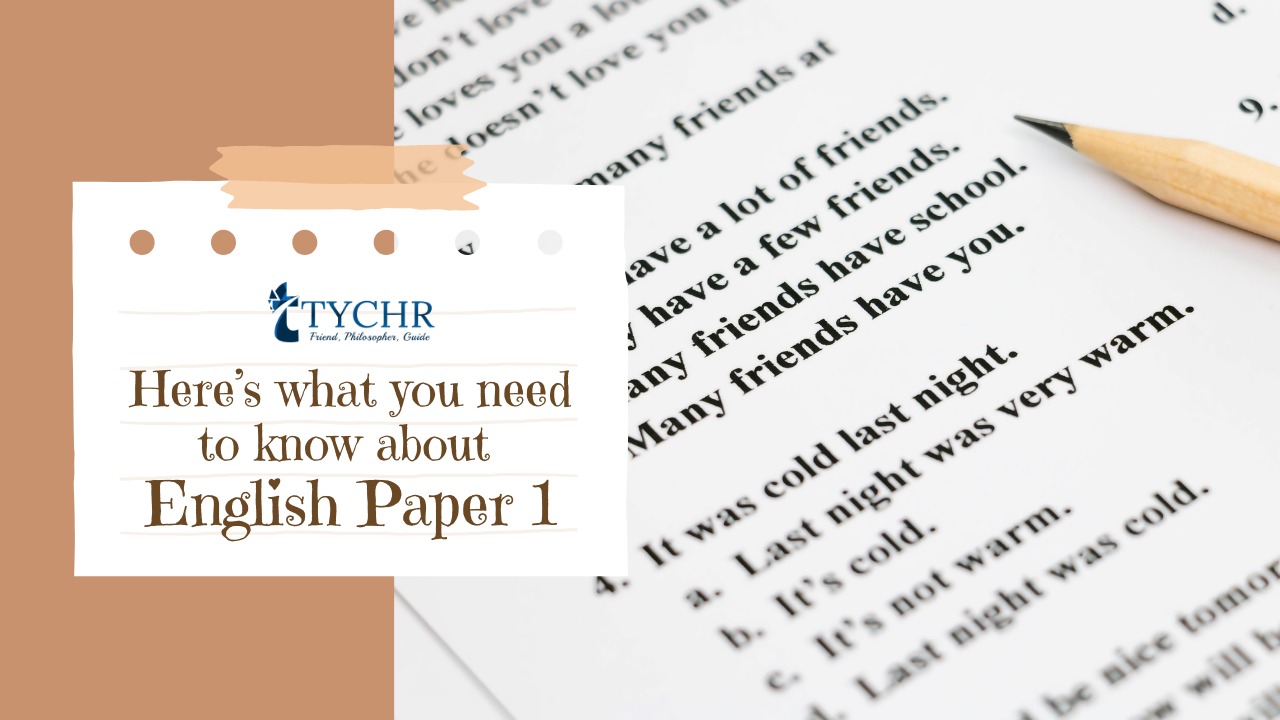Table of Contents
IB English Paper 1 can be put into 2 words: Textual Analysis. Now I’m going to tell you how you can turn that into 1000 words. Get ready to drown yourself in the paper and get your brain spitting out sensible questions and strong arguments.
The first and most important thing is to read. You have will be provided with 4 texts and you will be required to compare them. Once you decide which text is for you, you will pick one text. As soon as you turn over the fat scary booklet, you should set aside 30 minutes for reading (20 if you’re taking the SL English Paper 1 exam). Now observe. It’s a two-hour exam (one and a half hours for the SL English Paper 1), and there is no way you can pass it without studying.
In this reading time, your neat white paper needs to get messy slowly. You will be required to make notes on every point worth talking about. This doesn’t mean making a comment on every single statement. You will come across twisted words and sentences. That is your jackpot.
⏰ 30 minutes is up. Stop reading.
Ok so, by now your paper should look like the visual representation of what a depressed person is going through. Scribbles and key points everywhere. This should provide the scope to discuss literary techniques, themes, tone and mood of the writer, target audience, stylistic devices (which are the same as literary devices), and the structure. Literary devices are by far the most important. Literary devices are certain strategies used by writers to express a deeper meaning than what is written on the page. In addition to storyline and characters, literary devices can elevate a narrative and compel readers to consider various aspects of life, society, and what it is to be human.
I will give you 15 minutes to analyse it like you’ve never analysed before. “Through the use of…”, “The author’s tone reflects…”, “On the other hand, the structure…”. These are some sentences you want to use to sound smart.
Make sure you have enough sentences dedicated to each point in the text. State your points, explain why the writer may have decided to use it and the effect it brings on the reader. VOILA, you have a solid argument!
Structure of your response
Now that we’ve discussed what you need to include, it’s important to know where you need to include it as well. You can make a plan to meet your friend at 7pm, but where are you going to meet them? Your essay obviously needs structure and you need to know how to do it. Here’s a good way of doing it. I used to write my paragraphs according to the following structure:
- Audience/Purpose – Who is the author writing to and what is the purpose of it?
- Content/Theme – What does the text mean? Is there a theme you can detect?
- Tone/Mood – What is the author’s tone? What kind of mood does it instigate?
- Style – What is the style of the text? Formal, informal?
- Structure – How does the author structure the text? Are there graphics involved?
Ensure that you have 2 paragraphs for each of these points. Remember, it’s not what you argue, it’s HOW you argue. Convincing the reader is a big deal and practice is what will get you there.
Oh and I’m just putting this here but it will really save your life.
Also Read – SAT Writing ESSENTIAL Tips and Strategies

Important Literary Devices
- Allegory. The literary device of allegory is used to convey significant, complicated ideas in a clear, understandable way. With powerful critiques of political or societal reality, allegory enables writers to put some space between themselves and the topics they are criticising.
- Allusions: A common literary technique for developing characters, framing plots, and fostering linkages with well-known works is the allusion. Allusions can make references to anything, including the Bible, as well as popular culture and Greek Mythology.
- Foreshadowing. Storytelling’s main goal is to keep readers interested in your work by grabbing their attention and holding it. One strategy a writer might employ to establish and heighten suspense is foreshadowing, or subtly hinting at an upcoming occurrence.
- Imagery. If you’ve written creatively or studied it, you’ve probably heard the saying “create a picture with words.” This is referred to as imagery in poetry and literature: the use of figurative language to arouse the reader’s senses. The reader’s senses are engaged when a poet uses descriptive language skillfully; they are exposed to sights, tastes, smells, noises, and even intense emotion. Images come to life thanks to the sensory details in them.
- Irony. Irony is a frequently misunderstood literary technique that relies on contrasts between what things appear to be and what they actually turn out to be.
- Simile, metaphor, and analogy. Three strategies are employed in speech and writing to make comparisons: metaphors, similes, and analogies. Differentiating between the three can be a little challenging because each is used in a different way: For instance, a simile is essentially a type of metaphor, therefore while all metaphors are metaphors, not all similes are metaphors.
- Personification. Personification is a common form of figurative language that aims to portray a point or idea in a more vivid, imaginative way by giving human characteristics to a non-human entity or inanimate thing.
There are a million more devices, but these are the most commonly used ones that i’ve encountered in my two wonderful years of doing the IB.
So, that covers it up. I hope you knock it out of the park.
Frequently Asked Questions (FAQs)
Q1: What is IB English Paper 1?
A: IB English Paper 1 is a written examination that assesses a student’s ability to analyze and interpret literary texts. The exam requires students to read and respond to a specific text or texts.
Q2: What type of texts will be included in IB English Paper 1?
A: The texts included in IB English Paper 1 will be literary works such as poems, short stories, or excerpts from novels. The texts may be from different genres and from different time periods.
Q3: What is the format of IB English Paper 1?
A: IB English Paper 1 consists of two parts: Part A and Part B. Part A requires students to analyze a literary text and answer questions about it. Part B requires students to write a literary analysis essay on one of two prescribed essay questions.
Q4: What are the assessment criteria for IB English Paper 1?
A: The assessment criteria for IB English Paper 1 include understanding and interpretation of the text, analysis of the text, use of literary devices, organization and development of ideas, and language use.
Q5: How can I prepare for IB English Paper 1?
A: To prepare for IB English Paper 1, you should read and analyze a variety of literary texts, practice writing literary analysis essays, and become familiar with the assessment criteria. You should also review literary devices and techniques commonly used in literature, and practice analyzing how they contribute to the overall meaning of a text.








